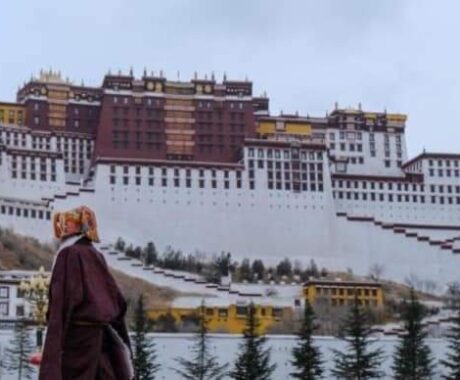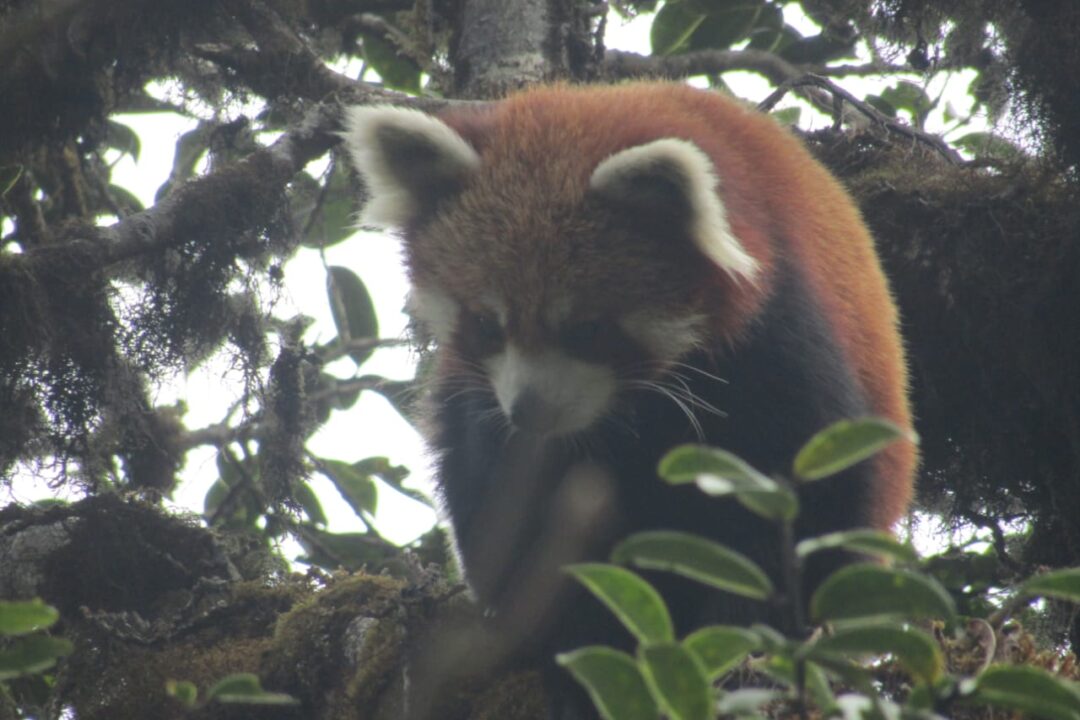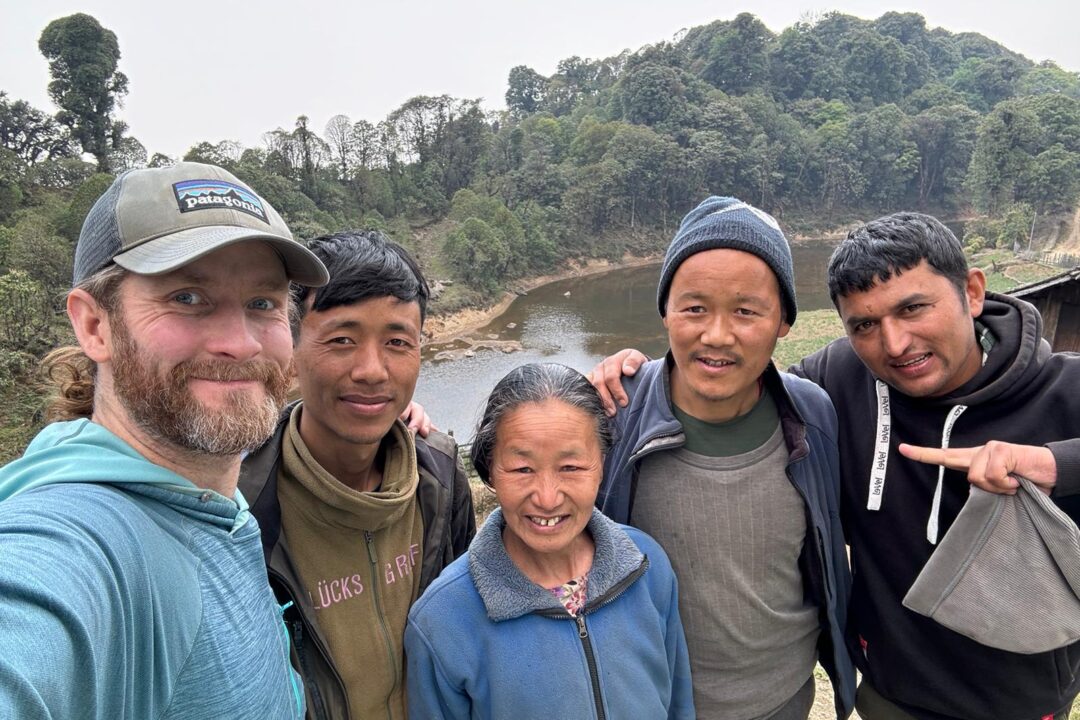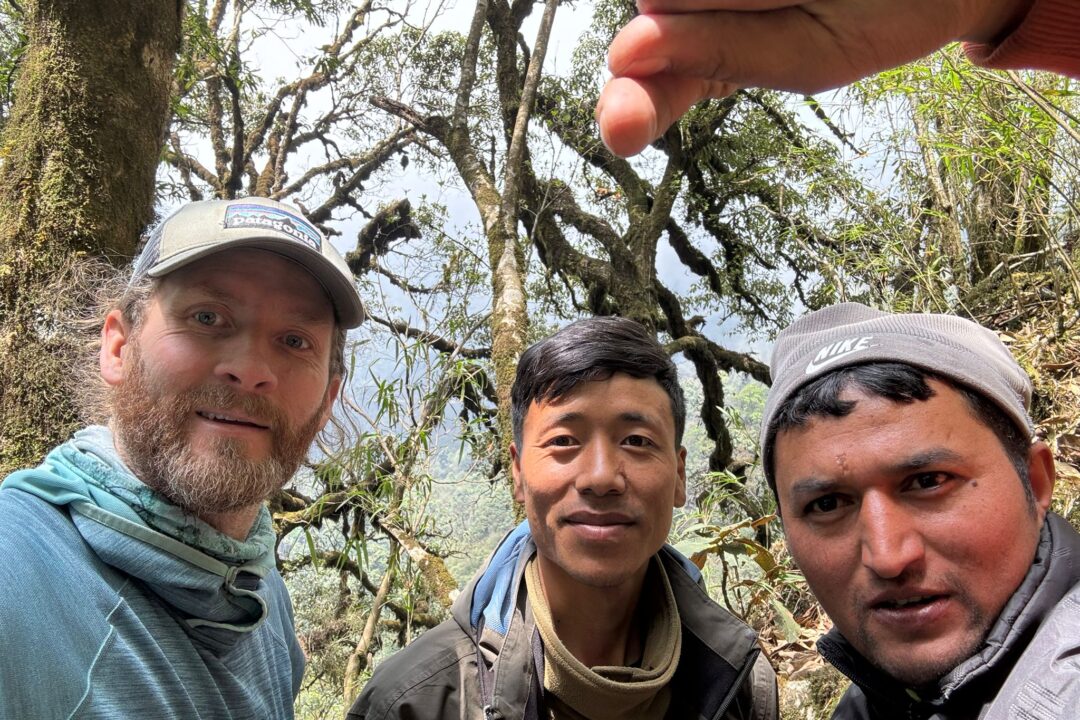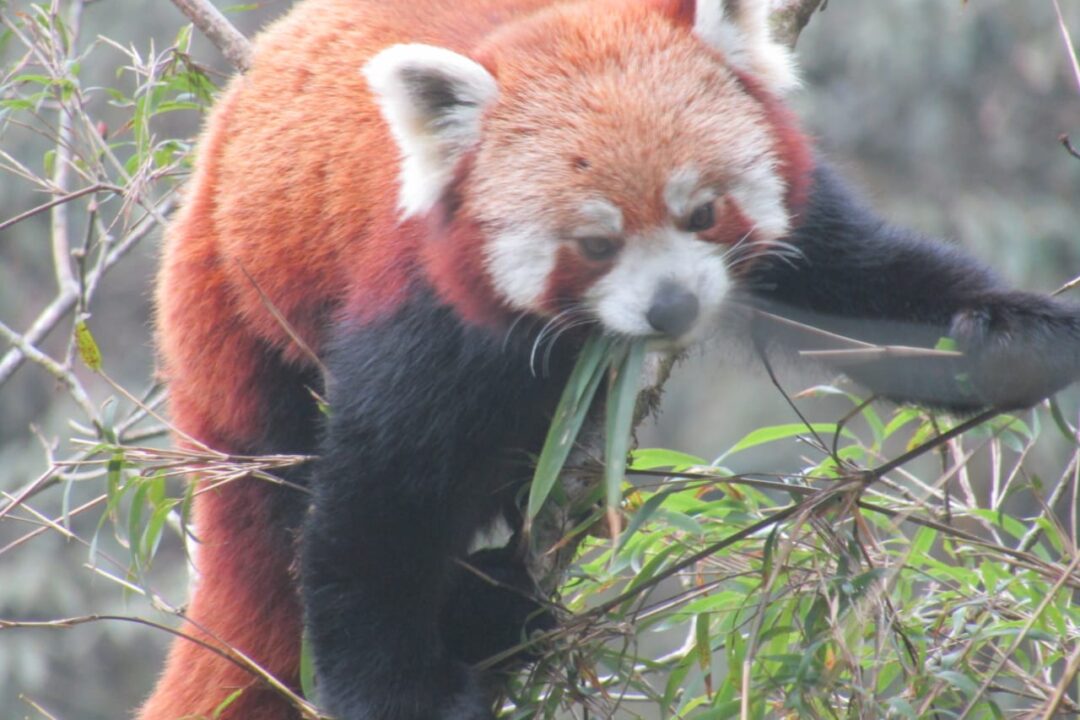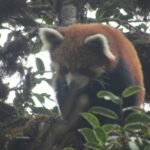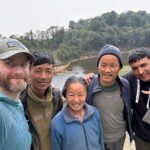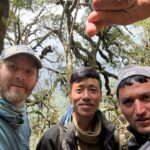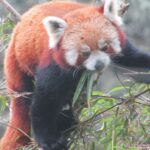Red Panda Tour in Nepal
Trip Facts
- Destination Nepal
- Activity Tours Wildlife Research Tour
- Duration 9 Days
- Trip Difficulty easy
- Max. Altitude 3000m
- Best Time Sep to May
- Start and End Kathmandu - Kathmandu
- Meals Breakfast / Lunch / Dinner
- Accommodation 5 star hotel in Kathmandu & Tea house
- Group Size 2 - 10
- Transportation Flight and Private transport
Introduction
RP Adventures specializes in organizing exclusive Red Panda tours across several key locations in Nepal, including Langtang National Park, Shivapuri National Park, and the Kanchenjunga Conservation Area. Now, we are excited to offer a meticulously curated Red Panda Tour near Ilam, specifically in the enchanting Dobato area. This bespoke journey is designed for wildlife enthusiasts and nature lovers who dream of encountering the elusive Red Panda in its natural habitat.
The Dobato tour offers a unique opportunity to explore the dense forests and rich biodiversity of eastern Nepal, providing the perfect setting for spotting these magnificent creatures. Our experienced guides, deeply familiar with the local terrain and Red Panda behavior, enhance the likelihood of witnessing these shy and rare animals. By choosing RPTreks and Expedition for your Red Panda adventure, you’re not just embarking on a wildlife tour; you’re stepping into a realm of conservation, education, and unforgettable experiences.
The Red Panda Trail Trek in eastern Nepal is a truly unique and immersive experience that offers a blend of wildlife encounters, cultural immersion, and the adventure of trekking through one of the world’s most beautiful and unspoiled landscapes. As you consider embarking on this journey, here are a few additional tips and insights to ensure your trek is not only enjoyable but also contributes positively to the conservation efforts and the well-being of local communities.
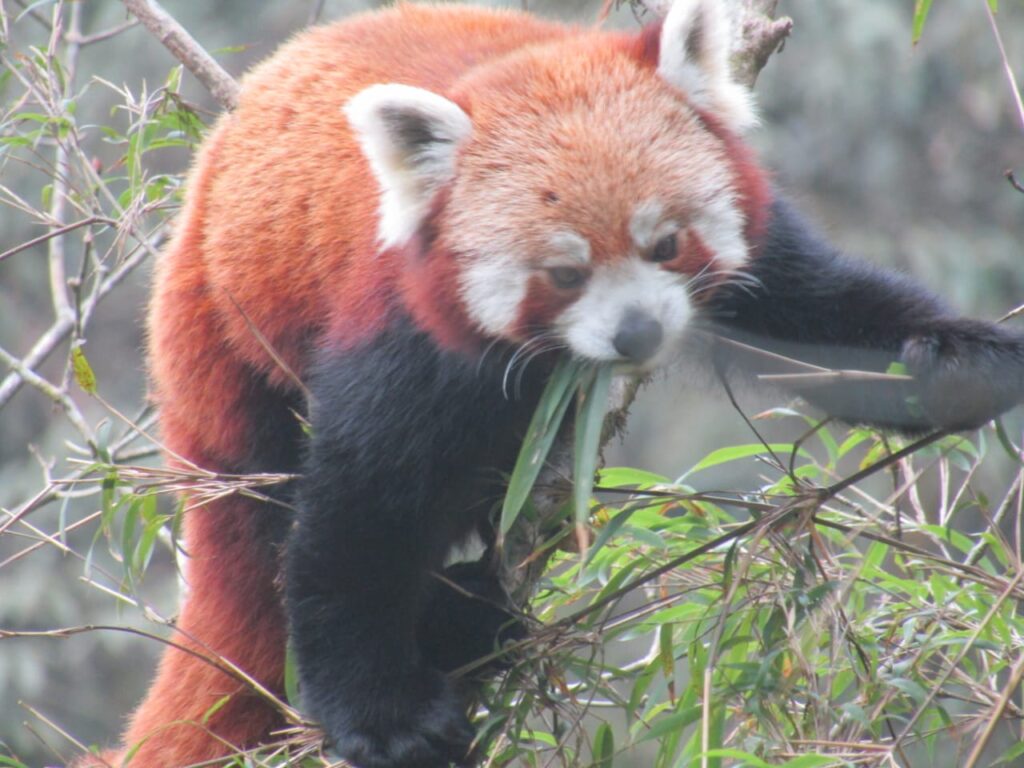
Physical Preparation: The trek can be demanding, with days spent walking in potentially challenging terrain. Begin a physical conditioning program several months in advance to ensure you’re in good shape.
Gear and Supplies: Invest in good quality trekking gear, including hiking boots, a comfortable backpack, and appropriate clothing for varying temperatures. Also, consider bringing along a good quality camera or binoculars for wildlife viewing.
Leave No Trace: Be mindful of your environmental impact. Carry out all your trash, use biodegradable products, and respect the natural habitat of wildlife.
Water Conservation: Use water sparingly, especially in remote areas where resources are limited. Consider using water purification tablets or a water filter instead of buying bottled water.
Cultural Sensitivity: Take the time to learn about the customs and traditions of the local communities you’ll be visiting. Dress modestly, ask permission before taking photos, and show respect to local customs.
Support Local Economies: Purchasing local crafts, dining in local eateries, and using local guides not only enhances your travel experience but also helps sustain the community economically.
Keep a Safe Distance: Always maintain a respectful distance from the wildlife. Use zoom lenses for photography instead of approaching too closely.
Quiet Observation: Avoid making loud noises that could disturb the animals. The quieter you are, the more likely you are to witness the natural behavior of wildlife.
Partnering with a reputable trekking company like RP Adventures ensures that you have knowledgeable guides who are committed to responsible tourism practices. They can significantly enhance your experience by providing insights into the local culture, flora, and fauna, ensuring that you have a safe and rewarding trek.
Support Conservation Initiatives: Consider making a donation to conservation organizations working in the Kanchenjunga Conservation Area. Your contribution can help fund critical conservation efforts, including habitat restoration and anti-poaching measures.
Keep a journal or blog of your experiences. Documenting your trek can not only serve as a personal memento but also inspire others to undertake responsible and sustainable travel.
The Red Panda Trail Trek is more than just a trekking adventure; it’s an opportunity to connect with nature, engage with local cultures, and contribute to the preservation of one of the planet’s most precious ecosystems. By embarking on this journey with mindfulness and respect, you can ensure that this enchanting trail remains a haven for the extraordinary wildlife and communities that call it home.
Outline Itinerary
Day 01: Arrival kathmandu and transfer to hotel – 1,300m
Day 02: Fly from Kathmandu to Bhadrapur Airport and transfer to Dobato – 2600m.
Day 03: Track red pandas with experienced guides and wildlife trackers in the morning. Enjoy a full-day excursion in the forest, complete with a packed lunch.
Day 04: Red Panda tracking day
Day 05: Red Panda tracking day.
Day 06: Red Panda tracking day
Day 07: Drive to Sandakpur. Witness a breathtaking sunrise from Sandakpur and enjoy panoramic views of the Himalayas. Return to Dobato for lunch and continue the journey to Kanyam Tea Garden
Day 08: Drive to Bhadrapur and Fly to Kathmandu
Day 09: Departure Kathmandu Airport – 1,300m
Alternative Tours Around Red Panda Tour in Nepal
If you’re captivated by the idea of spotting a Red Panda in Nepal’s pristine forests but want to explore different wildlife experiences, here are some fantastic alternatives:
- Nepal Bird Watching Tour – 13 Days: Explore Nepal’s diverse birdlife with this immersive tour, which takes you to some of the best birdwatching spots, perfect for spotting rare and endangered species, including a variety of Himalayan birds.
- Bardia Tiger Tracking Tour – 7 Days: For a truly thrilling wildlife experience, embark on a tour dedicated to tracking the elusive Bengal tiger in Nepal’s Bardia National Park, known for its rich wildlife and stunning natural beauty.
- Chitwan Wildlife Safari – 3 Days: Experience the beauty of Chitwan National Park, home to rhinos, tigers, elephants, and various species of birds. A perfect alternative for those seeking a classic safari experience in the heart of Nepal’s Terai region.
Detailed Itinerary
-
Day 01: Arrival Kathmandu and transfer to hotel - 1,300m
Altitude: 1300mMeals: BreakfastAccommodation: 3 star hotel in Kathmandu -
Day 02: Fly from Kathmandu to Bhadrapur Airport and transfer to Dobato - 2600m.
Meals: Breakfast / lunch / DinnerAccommodation: Tea house -
Day 03: Track red pandas with experienced guides and wildlife trackers in the morning. Enjoy a full-day excursion in the forest, complete with a packed lunch.
Meals: Breakfast / lunch / DinnerAccommodation: Tea house -
Day 04: Red Panda tracking day
Meals: Breakfast / lunch / DinnerAccommodation: Tea house -
Day 05: Red Panda tracking Day.
Meals: Breakfast / lunch / DinnerAccommodation: Tea house -
Day 06: Red Panda tracking Day
Meals: Breakfast / lunch / DinnerAccommodation: Tea house -
Day 07: Drive to Sandakpur. Witness a breathtaking sunrise from Sandakpur and enjoy panoramic views of the Himalayas. Return to Dobato for lunch and continue the journey to Kanyam Tea Garden
Meals: Breakfast / lunch / DinnerAccommodation: Tea house -
Day 08: Drive to Bhadrapur and Fly to Kathmandu
Altitude: 1300mMeals: Breakfast / lunch / DinnerAccommodation: 3 star hotel in Kathmandu -
Day 09: Departure Kathmandu Airport - 1,300m
Altitude: 1300mMeals: Breakfast
What's included
- Airport pickup and drop off
- 2 Nights Hotel in Kathmandu (3 star) with breakfast included
- Kathmandu - Bhadrapur - Kathmandu Domestic flight ( Round Trip )
- All land transportation (Bhadrapur to Dobato by private jeep)
- 1-night stay at a hotel in Ilam (Summit Hotel) or Kanyam
- 4 nights' stay at Dobato Community Homestay with full board (meals included)
- English speaking - experienced guide who has deep knowledge about Wildlife of Mountains
- Salary, Foods, Accommodation, and Insurance for Staff
- 3 - 4 days Red Panda Excursion
- All paperworks and government taxes
What's not included
- Meals in Kathmandu city
- Travel insurance
- All beverages, including soft drinks, and alcoholic beverages
- Personal trekking gears and equipment
- Tips for guides and driver
FAQs of Red Panda Tour in Nepal
-
1. What exactly is the Red Panda Tour in Nepal?
It’s a special eco-trek in the remote hills of Eastern Nepal where you’ll get the rare chance to track and observe wild red pandas in their natural Himalayan habitat—with the help of expert guides and local trackers. -
2. Why Nepal for red panda tracking?
Nepal is one of the best places in the world to spot red pandas in the wild, especially around the lush forests of Ilam and Taplejung in the eastern mid-hills. -
3. Where does the tour take place?
We trek through the Singalila and Panchthar-Ilam-Taplejung (PIT) corridor—one of Nepal’s most biodiverse regions and a key red panda habitat. -
4. What makes this trek different from others?
We work directly with local communities and conservationists, so every step you take supports wildlife protection and local livelihoods. It’s not just a trek—it’s part of something meaningful. -
5. How long is the tour?
You can choose between 7 to 12 days depending on how much time you’ve got and how adventurous you're feeling. -
6. Which places will we visit?
Expect to explore places like Ilam, Dobate, Mabu, Sandakpur, and the Singalila Ridge right near the India-Nepal border. These are some of the most beautiful and untouched spots in eastern Nepal. -
7. Is it a guided tour?
Yes—always. Our experienced wildlife guides and local red panda trackers are with you throughout the trek to make sure you get the best experience (and the best chances of spotting one!). -
8. Is it suitable for beginners?
Absolutely. As long as you're reasonably fit, this moderate trek is doable. You’ll walk 4–6 hours a day, and we take things at a steady, comfortable pace. -
9. Can I add other treks or tours to this trip?
Of course! Many travelers combine it with the Kanchenjunga trek or a cultural tour of Kathmandu and Pokhara. Just let us know what you're interested in. -
10. Will I actually see a red panda?
There’s a good chance! Our trackers know the forests inside out, and we head out early when red pandas are most active. Nothing is guaranteed in the wild, but our success rate is pretty impressive—especially in the right season. -
11. When’s the best time to go?
From October to April—clear skies, great visibility, and active red pandas make it the perfect window. -
12. Are sightings guaranteed?
Not 100%, since it’s nature after all—but during peak season, our guests spot red pandas about 70% of the time. -
13. What other wildlife might I see?
You could also come across Himalayan black bears, martens, civets, barking deer, and loads of beautiful birds. -
14. Can I take photos of the red pandas?
Yes, definitely—but with care. We focus on responsible photography, so our guides will help you maintain distance and avoid disturbing the animals. -
15. What’s the accommodation like?
A cozy mix of local homestays, basic mountain lodges, and eco-camps. It’s simple, authentic, and supports the communities you walk through. -
16. Are meals included?
Yes—three tasty, healthy meals a day, made from local ingredients. Plus tea, coffee, and clean drinking water are all taken care of. -
17. Will there be electricity and internet?
You’ll find electricity in some villages, but internet is patchy or nonexistent. It’s a great excuse to unplug and enjoy the wilderness. -
18. Do I have to carry all my stuff?
Nope! We provide duffel bags, and porters are available to carry your gear. You just carry a daypack with essentials. -
19. Is the trek safe?
Yes, it’s very safe. Our team is trained in first aid and always carries emergency communication devices and basic medical kits. -
20. Do I need any permits?
Yes, but we take care of all the paperwork and permit fees for you—no hassle. -
21. What about altitude sickness?
Not much to worry about. Most of the trek stays below 3,600 meters, and we ascend gradually to keep things easy on your body. -
22. What should I pack?
We’ll send you a full packing list. Key items: warm layers, waterproof jacket, good trekking shoes, binoculars, reusable water bottles, and a sense of adventure! -
23. Can families join this trek?
Yes, and we’ve had families with kids (10 and up) join with no problems. We adjust the pace to fit everyone’s comfort level. -
24. Is this tour good for photographers or researchers?
Absolutely. Many of our guests are wildlife photographers, nature lovers, researchers, and conservation students. -
25. How does this tour support conservation?
A portion of your tour fee goes directly to red panda conservation efforts, supports local guides and homestays, and helps raise awareness in the communities we visit.
Trip You May Like
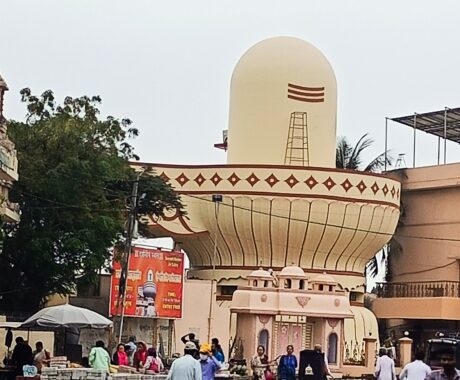
Eleven Jyotirlinga Tour ( God Shiva)
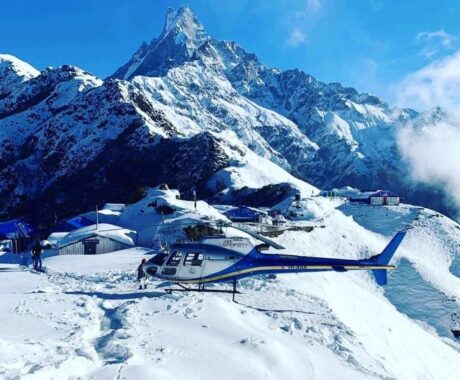
Annapurna Base Camp Helicopter Tour
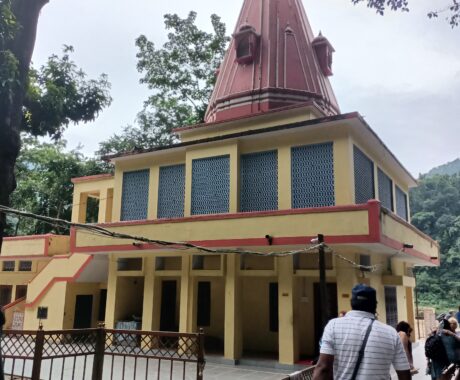
Char Dham Holy Tour
